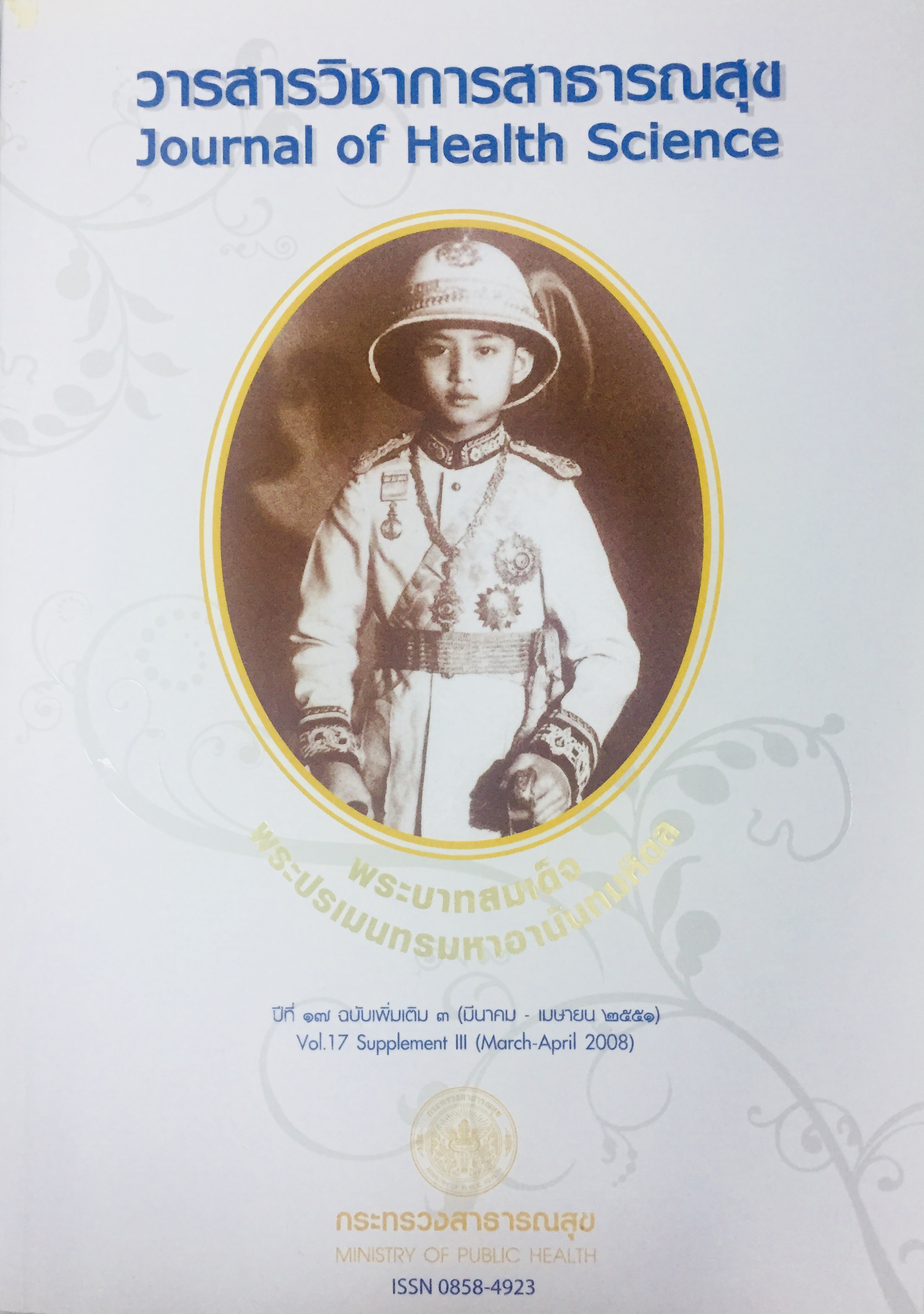วัตถุแปลกปลอมในหลอดอาหาร
คำสำคัญ:
วัตถุแปลกปลอมในหลอดอาหาร, กล้องส่องหลอดอาหารบทคัดย่อ
ศึกษาย้อนหลังผู้ป่วยทุกรายที่มีประวัติกลืน หรือสำลักวัตถุแปลกปลอม ในหลอดอาหาร และเข้ารับการรักษาในแผนกโสต ศอสนาสิก โรงพยาบาลพหลพลพยุหเสนา จังหวัดกาญจนบุรี ตั้งแต่วันที่ 1 มกราคม พ.ศ.2546 ถึง วันที่ 31 ธันวาคม พ.ศ. 2550 ทั้งสิ้นจำนวน 90 ราย พบวัตถุแปลกปลอม 71ราย (78.9%) ไม่พบ 19 ราย (21.1%) กลุ่มผู้ป่วยที่พบวัตถุแปลกปลอม พบในเด็ก 34 ราย (47.9%) พบในผู้ใหญ่ 37 ราย (52.1% ) แบ่งเป็นเพศชาย ร้อยละ 54.9 เพศหญิง ร้อยละ 45.1 ช่วงอายุที่พบบ่อยที่สุดคือ0-10 ปี (43.7%) วัตถุแปลกปลอมที่พบบ่อยที่สุด คือ เหรียญ (45.1%) ลำดับถัดมา คือ ก้างปลา (23.9%) และเศษกระดูก (16.9%) ตำแหน่งที่พบวัตถุแปลกปลอมบ่อยที่สุด คือ หลอดอาหารส่วนต้น (88.8%) เหรียญเกือบทั้งหมดพบที่บริเวณกล้ามเนื้อ cricopharyngeus และพบในเด็ก ภาพถ่ายรังสีบริเวณคอและทรวงอก ช่วยในการวินิจฉัยได้ดี มีความไว (88.7%)และความจำเพาะ (89.5%)ในการวินิจฉัยสูง ผู้ป่วยส่วนใหญ่ได้รับการรักษา โดยการใช้กล้องส่องหลอดอาหาร โดยวิธีดมยาสลบในห้องผ่าตัด ซึ่งได้ผลดีส่วนใหญ่ของผู้ป่วย (90.14%) ใช้เวลานอนโรงพยาบาลน้อยกว่า 2 วัน ไม่พบภาวะแทรกซ้อนที่รุนแรงในการศึกษาครั้งนี้
Downloads
ดาวน์โหลด
เผยแพร่แล้ว
วิธีการอ้างอิง
ฉบับ
บท
การอนุญาต
ลิขสิทธิ์ (c) 2018 วารสารวิชาการสาธารณสุข

This work is licensed under a Creative Commons Attribution-NonCommercial-NoDerivatives 4.0 International License.







